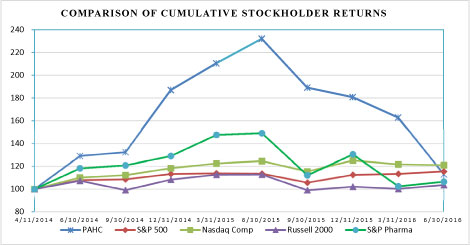Forward-Looking Statements
This Annual Report on Form 10-K contains forward-looking statements that are subject to risks and uncertainties. All statements other than statements of historical or current fact included in this report are forward-looking statements. Forward-looking statements discuss our current expectations and projections relating to our financial condition, results of operations, plans, objectives, future performance and business. You can identify forward-looking statements by the fact that they do not relate strictly to historical or current facts. These statements may include words such as “aim,” “anticipate,” “believe,” “estimate,” “expect,” “forecast,” “outlook,” “potential,” “project,” “projection,” “plan,” “intend,” “seek,” “believe,” “may,” “could,” “would,” “will,” “should,” “can,” “can have,” “likely,” the negatives thereof and other words and terms of similar meaning in connection with any discussion of the timing or nature of future operating or financial performance or other events. For example, all statements we make relating to our estimated and projected earnings, revenues, costs, expenditures, cash flows, growth rates and financial results, our plans and objectives for future operations, growth or initiatives, strategies, or the expected outcome or impact of pending or threatened litigation are forward-looking statements. All forward-looking statements are subject to risks and uncertainties that may cause actual results to differ materially from those that we expected. Examples of such risks and uncertainties include:
•
perceived adverse effects on human health linked to the consumption of food derived from animals that utilize our products could cause a decline in the sales of those products;
•
restrictions on the use of antibacterials in food-producing animals may become more prevalent;
•
a material portion of our sales and gross profits are generated by antibacterials and other related products;
•
competition in each of our markets from a number of large and small companies, some of which have greater financial, research and development (“R&D”), production and other resources than we have;
•
the impact of current and future laws and regulatory changes;
•
outbreaks of animal diseases could significantly reduce demand for our products;
•
our ability to successfully implement several of our strategic initiatives;
•
our business may be negatively affected by weather conditions and the availability of natural resources;
•
the continuing trend toward consolidation of certain customer groups as well as the emergence of large buying groups;
•
our ability to control costs and expenses;
•
any unforeseen material loss or casualty;
•
exposure relating to rising costs and reduced customer income;
•
competition deriving from advances in veterinary medical practices and animal health technologies;
•
unanticipated safety or efficacy concerns;
•
our dependence on suppliers having current regulatory approvals;
•
our raw materials are subject to price fluctuations and their availability can be limited;
•
natural and man-made disasters, including but not limited to fire, snow and ice storms, flood, hail, hurricanes and earthquakes;
•
terrorist attacks, particularly attacks on or within markets in which we operate;
•
our reliance on the continued operation of our manufacturing facilities and application of our intellectual property;

